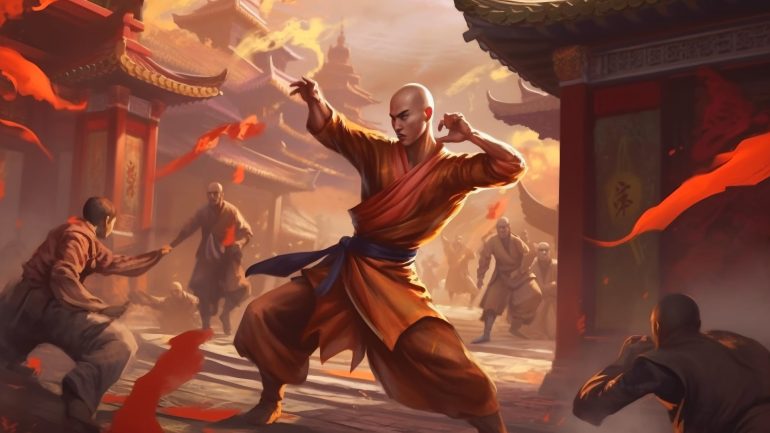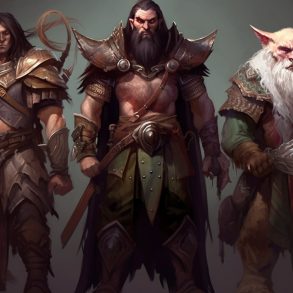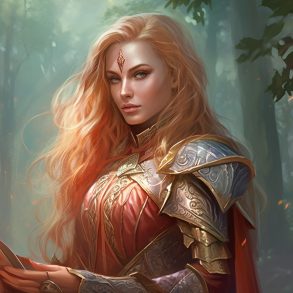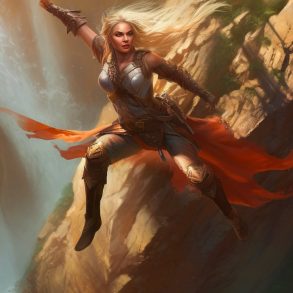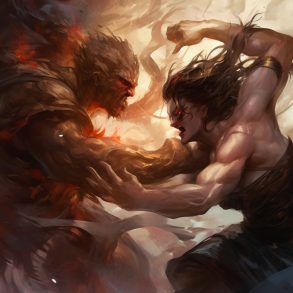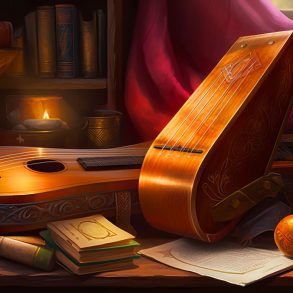Fighting styles in DnD 5E are a way to customize how your martial-inclined character works in combat but, with so many options available and the access to them restricted they can be confusing. Fear not, trainee! We’ll break down all you need to know about Fighting Styles and the various ways to get them.
How to get a Fighting Style
If you’re interested in getting a fighting style for your character there are three sources you can draw upon: classes, subclasses, and a feat. Here is a complete list of where you can grab one:
- Fighter (Class feature, 1st level) – As you might expect, this class gets a fighting style the earliest and has the largest selection to choose from.
- Paladin (Class feature, 2nd level) – These holy half casters get their fighting style a little later than Fighters, with their own exclusive style that gives access to Cleric cantrips.
- Ranger (Class feature, 2nd level) – Wilderness experts get their style at the same level as Paladins, with their own exclusive style giving access to Druid cantrips.
- College of Swords (Bard subclass feature, 3rd level) – This martial subclass gets a choice of two different styles to make you feel like you excel at sword use, rather than flunking college.
- Champion (Fighter subclass feature, 10th level) – The simplest Fighter subclass gets to choose a second style at 10th level, which can open up interesting combinations.
- Fighting Initiate (Feat, requires proficiency with a martial weapon) – This feat can add a fighting style to any class, or even a second one on to a class that already gets one. You can even take this at 1st level as a variant human, as long as your class gave you proficiency with at least one martial weapon.
Can you have more than one Fighting Style?
Short answer, yes you can! You can grab as many styles as you can get through the above methods, however, you can’t benefit from the same style twice. This means no stacking Dueling for a +4 damage or Archery for a +4 to hit!
List of Fighting Styles
We will now list all of the published styles that you can choose from, adding commentary about their use and effectiveness. Noted in brackets will be the book that the style was published in and the classes they are available for using the following key:
F = Fighter
P = Paladin
R = Ranger
SB = College of Swords Bard
Archery [PHB, F R] – Some would say a must-have for any ranged weapon user, this style will offset the AC increase of an enemy behind half cover, or go a long way to offsetting the -5 penalty for +10 damage the Sharpshooter feat offers. Some players may choose this feat just to make their hits more reliable, which feels good but also allows them to leverage other damage boosts, like Hunter’s Mark.
Blessed Warrior [TCoE, P] – If you’re looking to play more of a Charisma-focused, mage Paladin then this is a great choice. Some stand-out choices for cantrips include Guidance, Sacred Flame, and Toll the Dead.
Blind Fighting [TCoE, F P R] – This is a much more niche style, providing blindsight, but only with a range of 10 ft. This style is best suited for melee builds and if this interests you, then consider leveraging spells like Fog Cloud and Darkness to get the most of it.
Defense [PHB, F P R] – Perhaps a more boring style, this can either partially compensate for not wearing a shield or push your AC even higher with one. Whilst not the most interesting choice, it is certainly effective and can save you from losing a fair chunk of hit points across your adventuring career.
Druidic Warrior [TCoE, R] – Not only can this style help you play more of a magic-focused Ranger but, it can allow you to focus on Wisdom rather than Dexterity or Strength by using the Shillelagh cantrip. Stand-out choices include Guidance, Shillelagh, and Thornwhip, just remember that spells don’t benefit from Hunter’s Mark unless they’re used to enhance your weapon attacks.
Dueling [PHB, F P R SB] – A flat bonus is reliable damage that you can count on, for example, this +2 is much better than the +1 damage you’d get on average by using a longsword in two hands, rather than one. If you are interested in maintaining a higher damage output whilst using a shield, then this style is a great choice.
Great Weapon Fighting [PHB, F P] – This is a relatively minor damage increase on average, and so isn’t highly recommended as a style. It’s worth noting that our play experiences are not likely a representation of the average, and rerolling that 1 on a d12 into a 10 feels great, even if it doesn’t have as big an impact overall. Note: This only applies to weapon damage, so you can’t reroll damage from a feature like Divine Smite with it.
Interception [TCoE, F P] – If you’re interested in playing a tank or protector character then this can be a great style but, requires some buy-in from your party members. Unlike Protection, this reaction can’t be wasted, it will always benefit the person being hit. The reduced damage not only saves hit points but, can also lower the DC of saves to maintain concentration and possibly prevent instant death from massive damage. This style is also more flexible than Protection, only requiring a weapon or shield, instead of needing the latter. That said, this style is only as good as how reliably you can use it, if your teammates don’t want to stay within 5 ft. of you, it may as well not exist most of the time.
Protection [PHB, F P] – A much higher risk/reward proposition than Interception, this style can be wasted if the monster rolls well enough to still hit with disadvantage. On the other hand, it can mitigate damage from an attack entirely if it causes a miss, allows you to cancel out advantage, and provides some degree of insurance against critical hits. The downfall of this style is requiring a shield and needing your party member to be within 5 ft. of you, but it might sting a little if the monster still hits and you feel the reaction was wasted.
Superior Technique [TCoE, F] – This style will allow you to add a little Battle Master (BM) into any Fighter build, or increase the power of an actual BM. This is a noticeable increase in the variety of maneuvers and uses for the dedicated BM, whilst allowing other subclasses to gain a maneuver that they can use to cover a weakness or increase their nova potential. An example of how you can use this style is to take Precision Attack for a Great Weapon Master Samurai, using the d6 to push an attack into a hit when advantage doesn’t cut it, or rather, them. Note: the Superiority Die that you get from this style can be used with a maneuver you get from other sources. Even if you are a Battle Master, this die is a d6 until you gain Improved Combat Superiority, which improves all of your Superiority Dice, regardless of their source.
Thrown Weapon Fighting [TCoE, F R] – If you’re interested in playing a character that specializes in throwing weapons, then this style is essential for allowing you to draw as many weapons as you have attacks. The +2 damage is also very nice, as weapons with the thrown property tend to have lower damage dice. Note: you can stack this style with either the Dueling or Two-Weapon Fighting styles for even more damage!
Two-Weapon Fighting [PHB, F R SB] – If you are drawn to using two weapons then this style is a significant increase to your damage, and essential if you want to keep your damage competitive with other weapon choices.
Unarmed Fighting [TCoE, F] – Much like some other styles on this list, this one is essential if you want to use unarmed strikes as your main tactic. This style is also more competitive than using the natural weapons that certain races have, as you can use both hands for a d8 and get a benefit for grappling. The latter part of this style makes it very appealing for grappling builds, allowing them to offset some of the damage potentially lost by attempting the grapple in the first place.
Which classes could benefit from a Fighting Style?
Quite simply, all of them. The nature of some fighting styles means that they are universally appealing, such as taking Superior Technique and choosing a maneuver that increases an out of combat skill, or Defense if you wear any form of armor. However, we will highlight a few races that can particularly benefit from gaining a style, be it from the feat or multiclassing:
- Barbarians – This class can benefit from numerous fighting styles but, two specific choices are Defense and Two-Weapon Fighting. The former allows the Barbarian to compensate for not using a shield, if they choose to use medium armor and a heavy weapon, for example. The latter allows them to get more out of two-weapon fighting, which they are well suited for as it gives them another opportunity to leverage their Rage damage bonus.
- Monks – Regarded by some to be lacking in the damage department, they can make use of Dueling and Superior Technique to add some damage. More specific examples include a Kensei using Archery for a longbow, or a Shadow Monk taking Blind Flighting so they can see within their own Darkness spell.
- Rogues – With only one, big-hitting attack they rely on, ranged Rogues can benefit significantly from the Archery style, whilst melee Rogues can gain a minor damage boost from Dueling, Thrown Weapon, and Two-Weapon Fighting styles. A specific example is the Soulknife subclass, which can leverage both Dueling and Thrown Weapon Fighting to gain up to +8 damage across their two attacks.
Sparring is over for the day now recruit, time to go and rest your aching muscles and put what you’ve learned into practice. If you’re here because you want to play a Fighter, then check out our Fighter 5E guide, or if you’re new to the game, then check out our how to play section. Until next time, good luck out there adventurers, and remember to watch your form!
